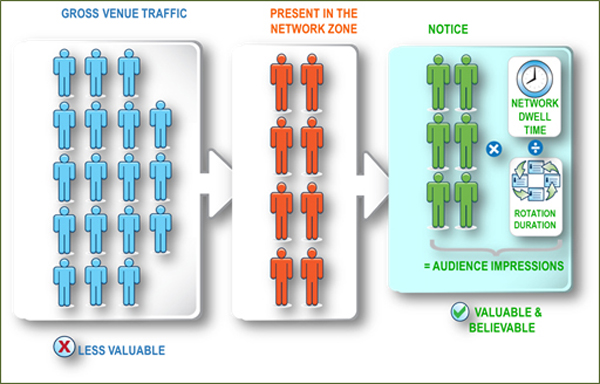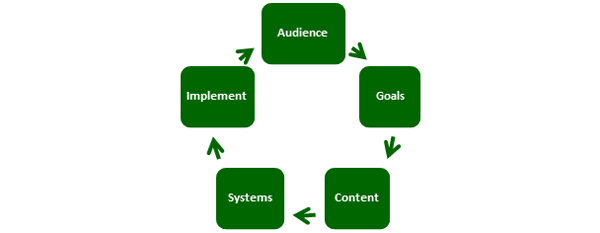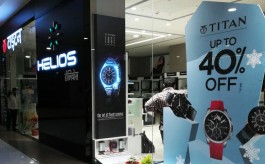Measuring and Benchmarking Digital Signage performance
By Dipanjan Mukherjee | May 08, 2013
A paper by Ron Graham, Media from On The Go Pte Ltd, looks at measurement, benchmarking and performance to generate insights into maximizing effective use of digital signage deployments. Here are excerpts from the paper.
 Digital signage value proposition stems from its ability to communicate rich content, to large numbers of highly relevant audiences, in engaging and interactive ways. Doubtless it is valuable, yet today there are many investors unhappy with their digital signage systems and there are many more who have not made the move to invest yet, due to some reservation or resistance.
Digital signage value proposition stems from its ability to communicate rich content, to large numbers of highly relevant audiences, in engaging and interactive ways. Doubtless it is valuable, yet today there are many investors unhappy with their digital signage systems and there are many more who have not made the move to invest yet, due to some reservation or resistance.Analyze the audience
For successful operations of digital signage the first step is to analyze audience and truly understand who are in the locations, for how long, doing what activities and what would be of interest and value to them. Do the homework first, then the communication strategy and key business goals can be established, which in turn will lead to effective content that will attract views, be seen and understood and produce desired result. Hardware & software solutions will be the last choices to make and largely driven by clarity of the previous steps, so that successful deployment will result. Chronology is important and errors often result from prioritising on technology rather than communication and audience issues.
Knowing the audience and activities and having a communication strategy or other clear business objectives will almost certainly result in digital signage being displayed at the right time & place but will it be the right content?
Measurement.
The granular data which online and mobile gives to marketers, as well as proven interactivity, demands that other media have to compete harder, to attract the marketing dollars of brands. This is leading to traditional media upping their game, giving more evidence of actual impacts of advertising being seen, rather than simple exposure.
This is less of a threat and more of an asset to digital screen media as it has the potential for highly automated gathering of key metrics, such as proof of play, tracking interactions and generating audience data.
We can profile audiences, by knowing the types of people who will be in the vicinity of screens and how they may be exposed to content on the screens; for example teens and families in a fast food outlet, or shoppers browsing and making purchase decisions. We can also estimate average dwell time. In most situations we can define when audiences are present in the vicinity of screens and then further express dwell time relative to the program loop duration, to create a believable and valuable statement of actual impressions.
 Source: DIGITAL PLACE-BASED ADVERTISING ASSOCIATION GUIDELINES
Source: DIGITAL PLACE-BASED ADVERTISING ASSOCIATION GUIDELINESMeasuring actual noticing of the content is relatively simple now through face recognition and eye tracking technologies, which few other media channels can offer. Face recognition - or anonymous view analytics - has been around for a while but is now finding its niche. Now face recognition gives deep data and accountability of actual audience and attention, as good or better than clicks or page views online.
It is this precision of measurement which is compelling for digital signage deployments and there are many providers such as Intel's AIM Suite, Quividi and even local players in Singapore such as 1-2-1 View.
With this ability to provide precise, real-time measurement, you'd expect that everyone was jumping on the face recognition bandwagon however this is not the case. Part of the problem is that the numbers generated for audience interaction are vastly different to previous accepted measurement of audience exposure.
 Benchmarking.
Benchmarking.We can solve the inertia or fear of different scale of measurement, by benchmarking new metrics to old data. For decades, the value of communications has been expressed as cost per thousand or CPM, however in the past 10-years or so we have become familiar with cost per click or CPC. One is a measure of exposure opportunities, while the other is measured on specific action. They are miles apart in terms of quantum, but actually can be benchmarked to each other.
Digital Signage needs to establish a basis for comparing exposure, traditionally expressed as Opportunity To See, or OTS, with a new metric of actual viewing interaction. If the footfall at a property was 100,000 visits per day for an average of 90 minutes these numbers would be stated as the potential exposure or OTS. Conversely AVI data might show 30,000 people looking at screens in multiple glances perhaps adding up to 20 seconds in total.
 Performance.
Performance.Measurement, benchmarking and performance are all indelibly linked; measurement to quantify performance and benchmarking to compare performance? Checks should be applied to every step, from audience, to marketing goals, content strategies, systems choices and deployment.
Continuous improvement to performance is assured when we test, adjust, optimise and repeat the process and by doing so, we can generate insights absolutely specific to and relevant to, each and every digital signage investment. Anonymous analytics immediately and simply delivers insights to the viewing habits for digital signage, which makes it vitally important to use this information to check and confirm performance.
Real time connectivity is essential to capitalise on these benefits so the use of internet networks and cloud-based internet platforms is paramount. It then follows that digital screen network features should include a reliable and accurate audience detection, recognition and measurement system, analytical capability plus reporting for accountability. These are the keys to generating data and insights which can be leveraged for optimum effect and value.
In summary, know what works in terms of attracting and rewarding viewers. Measure the audience and gather insights to refine effectiveness. Benchmark and make ongoing performance checks to confirm results and give meaningful expression of value to prove ROI.
Ron Graham is South & South East Asia Representative, Digital Screenmedia Association Asia Pacific. This paper was presented at Digital Signage World Asia joint conference with Retail World Asia, held in Singapore 24th April, 2013
Advertisement








